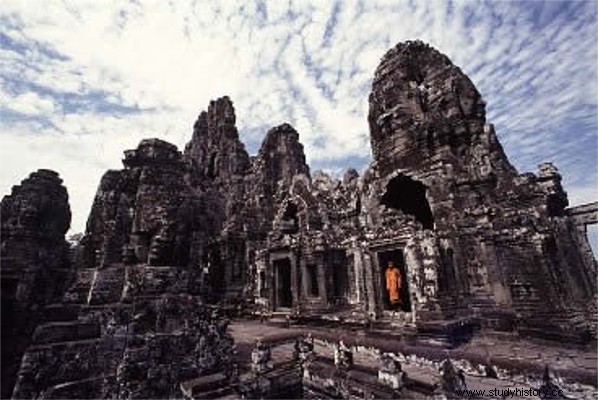
If someone said that the greatest urban center built in the century XIX was in Southeast Asia, we could, at the very least, suspect that this was a mere spite of the growing European capitalist nations that were emerging in this period. To overcome this suspicion, the studies of the Royal British Geographical Society would introduce him to the city of Angkor, the main center of Khmer civilization.
Formed around the 8th century, the Khmer empire came to dominate a extensive region that involved the present-day territories of Cambodia, Myanmar and Laos. Growing up in an isolated portion of Southeast Asia, the Khmer have achieved the stability necessary for the development of their customs and traditions over the centuries. Some conflicts were triggered with the Javanese, who wanted to control continental portions of Asia.
It was in the 9th century that the Khmer undertook the formation of their empire. After the escape of the prince Jayavarman II from the hands of the Javanese, the Khmer people organized a great army that conquered the first territories of the coming Khmer empire. Overcoming the region's long periods of drought, the Khmer dynasties achieved the expansion of their people through a complex irrigation system responsible for ensuring plentiful rice crops spread across the Cambodian plain.
With the growth of the population and the expansion of the territory, the Khmer became a hydraulic civilization that saw in the fertility of its lands and in the monarchical authority the great icons of its religious worship. The water and the king were reasons for the construction of several temples in the interior of the territory. It was only in the twelfth century that the Khmer suffered from the invasion promoted by the Champa kingdom. After nearly a century of domination, Emperor Jayavarman VII managed to regain possession of the empire and, after dominating a vast region, created the city of Angkhor.
Over the years, the city has become an important commercial center visited by foreign peoples, such as Chinese and Indians. Women had great participation in these activities and came to occupy a prominent position among the Khmer. Many of them were responsible for controlling important public offices in the empire. In the midst of so many conquests and a wide socio-economic network, the Khmer Empire did not seem to suffer any kind of threat.
However, from the 13th century onwards, disputes over a monarchy without a defined succession system led to the ruin of this people. At the same time, attacks by the Vietnamese and Thai peoples began to weaken Khmer supremacy. In 1431, Angkor fell victim to a massive looting by the Thais.
In addition to internal conflicts and foreign attacks, the collapse of the Khmer economy was also another reason for the demise of this vast civilization. The erosion of the soil and the lack of water resources were other factors raised for the disappearance of the Khmer civilization. Over time, the economic crisis was the target of a large diaspora that left Khmer temples and cities abandoned in the middle of the Southeast Asian jungle.
